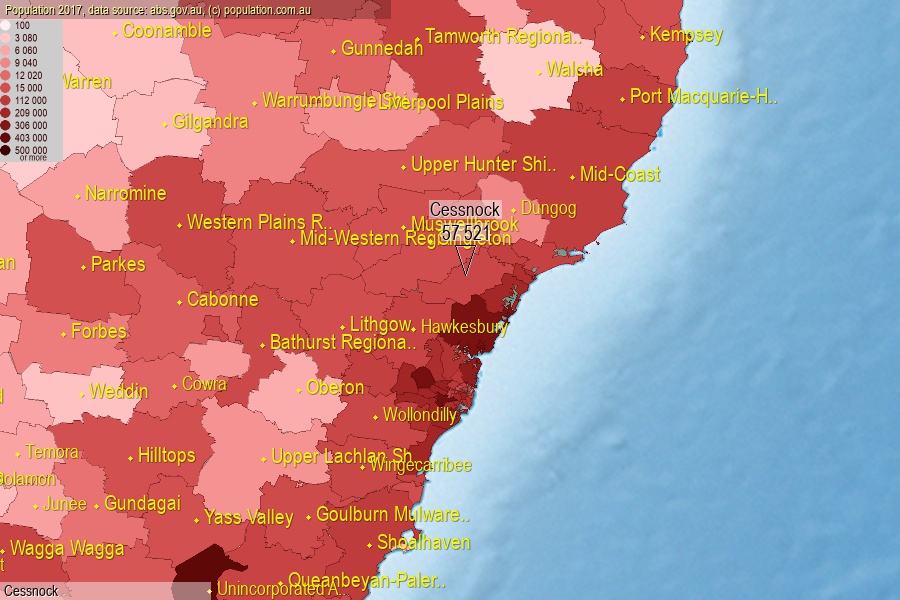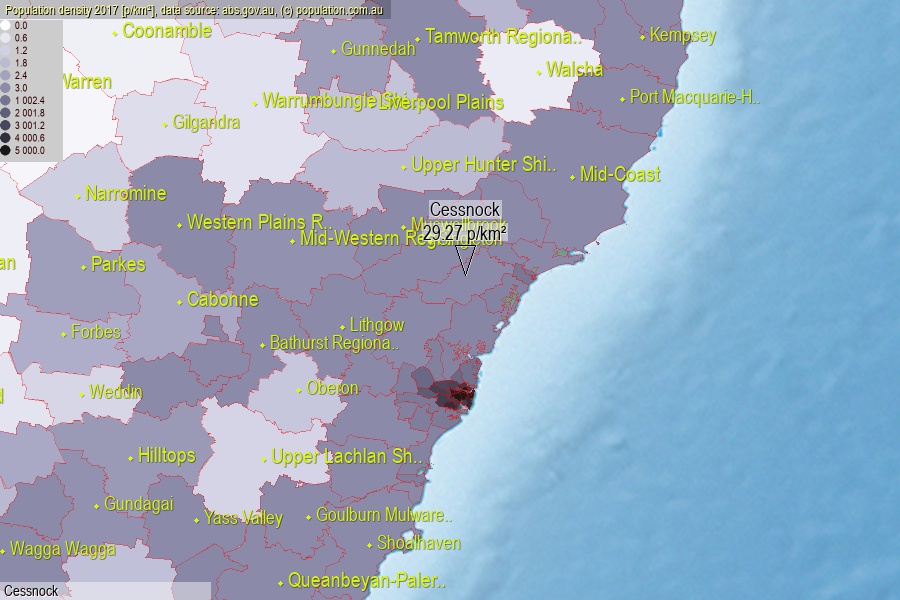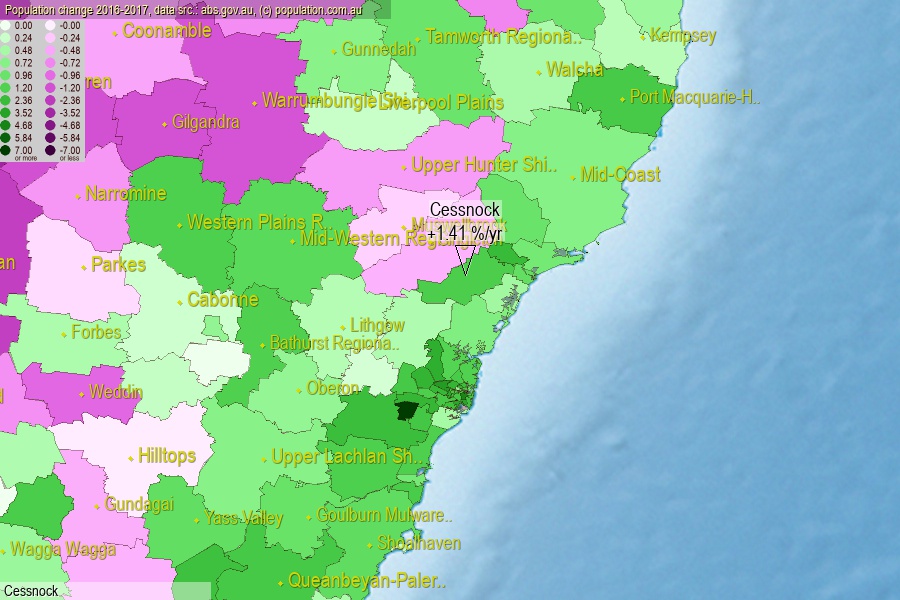 population.com.au
population.com.auLast official estimated population of Cessnock City (as Local Government Area) was 57 521 people (on 2017-06-30)[2]. This was 0.23% of total Australian population and 0.723% of NSW population. Area of Cessnock is 1 965.20 km², in this year population density was 29.27 p/km² . If population growth rate would be same as in period 2016-2017 (+1.41%/yr), Cessnock population in 2025 would be 64 350. [0]



Click to enlarge. Cessnock is located in the center of the images.
Population [people], population density [p./km²] and population change [%/year] [2]
[1996-2001] +0.49 %/Y
[2001-2002] +0.43 %/Y
[2002-2003] +0.33 %/Y
[2003-2004] +0.18 %/Y
[2004-2005] +0.08 %/Y
[2005-2006] +0.26 %/Y
[2006-2007] +1.85 %/Y
[2007-2008] +2.07 %/Y
[2008-2009] +1.86 %/Y
[2009-2010] +2.16 %/Y
[2010-2011] +2.30 %/Y
[2011-2012] +1.59 %/Y
[2012-2013] +1.85 %/Y
[2013-2014] +1.47 %/Y
[2014-2015] +1.42 %/Y
[2015-2016] +1.49 %/Y
[2016-2017] +1.41 %/Y
[0] Calculated with linear interpolation from officially estimated population
[1] Read more about LGA and Australian Statistical Geography Standard (ASGS) on abs.gov.au
[2] Population data from Australian Bureau of Statistics (Population and density: 2017; change: 2016-2017)
[3] Digital Boundaries: Australian Statistical Geography Standard (ASGS) 2016.